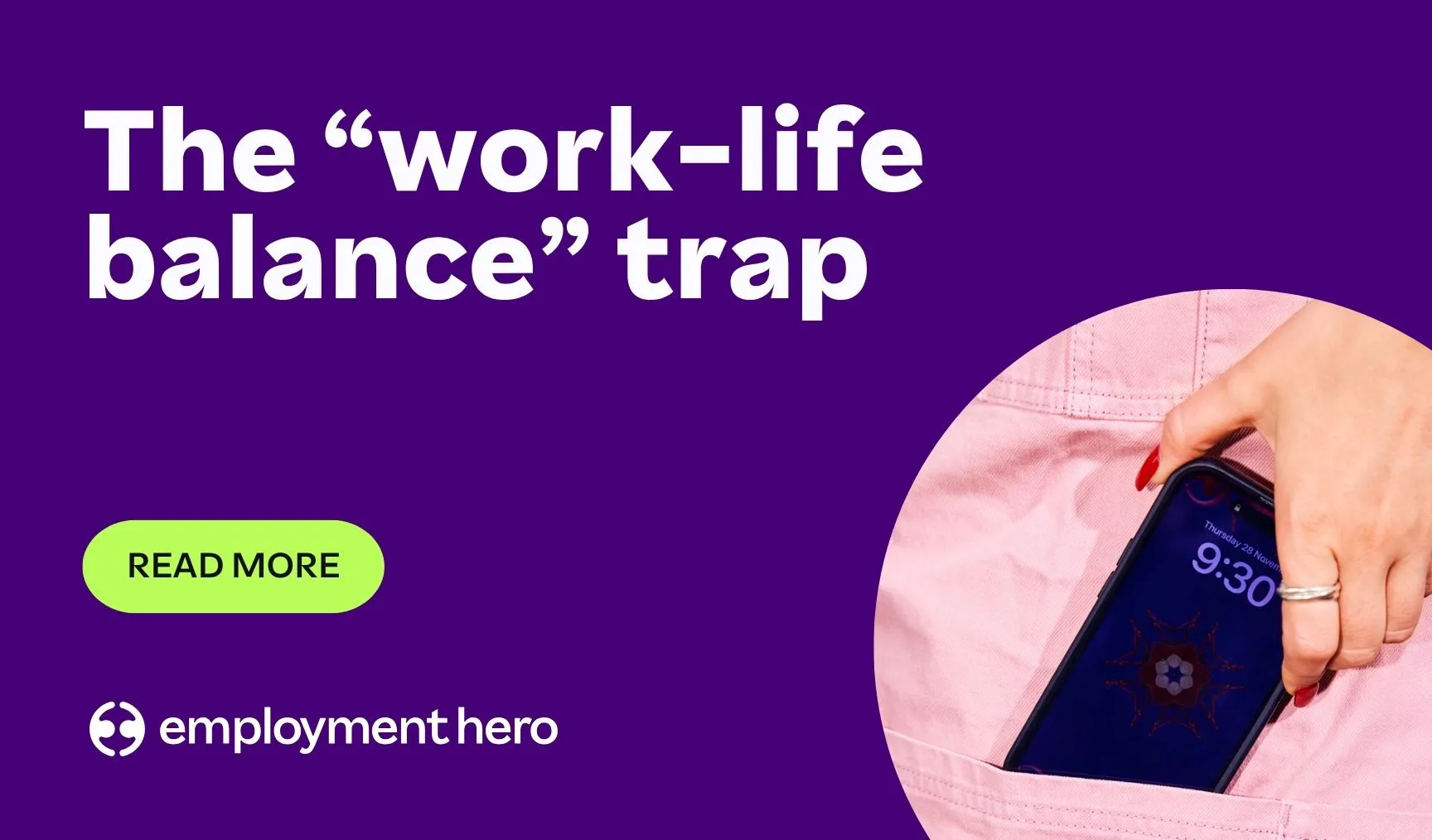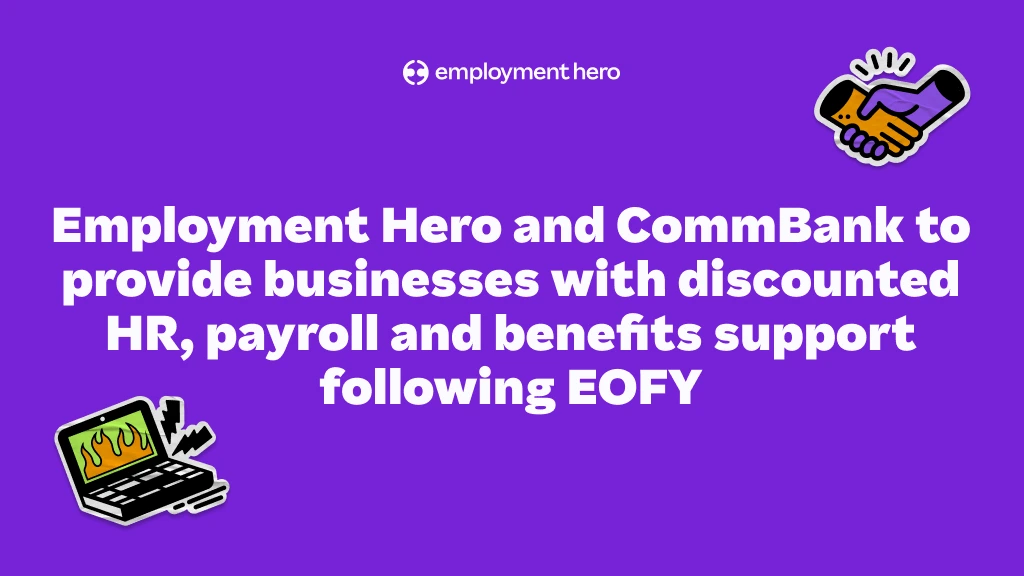How to support your employees during the Omicron wave
Despite this latest round of setbacks and uncertainty, what can we do to keep our teams feeling united and supported?

Contents
Just when you thought there weren’t any more dumpsters to light on fire, Omicron has arrived to spice up 2022.
The new variant has forced the world to enter a new phase of the pandemic; where the widespread infection is unavoidable, but we’re not exactly sure how to deal with it. As a result, issues with supply chains, staffing, and the provision of rapid tests have thrown communities into absolute chaos.
We know that business owners are at ends with this pandemic. We understand that this was meant to be the quarter that would see us start to rebuild, and it hurts that there’s yet another hurdle to climb. We also know that employees are tired and anxious. As a leader, they look to you for support during this latest challenge.
In the UK, emerging data suggests that Omicron has moved past its peak. In Australia, stalling numbers are pointing towards a plateau for the Eastern states. Although this wave is overwhelming, it’s important to remember that it will pass at some point.
And in the meantime? Despite this latest round of setbacks and uncertainty, what can we do to keep our teams united and feeling supported?
What do we know about Omicron?
The situation with Omicron is quickly evolving. As you read this article, there will probably be updated information available based on continuous scientific testing of virus behaviours.
It’s critical for employers to be as informed as possible about the new variant so that they can respond to their employees’ concerns with the latest facts. Bad news such as this can often trigger mass hysteria, but the fact is that we simply don’t know the extent of the issue as of yet; we don’t know if the vaccine will defend against Omicron, we don’t know if Omicron will affect sufferers as severely as the Alpha or Delta strains of Covid-19, and we don’t know yet how global governments will respond.
At the time of writing, the World Health Organisation has labelled Omicron as a ‘variant of concern’. Researchers in South Africa, where the strain is believed to have originated, and around the world are currently investigating the aspects of Omicron.
At this stage, it is not yet clear whether Omicron is more transmissible or more severe than other forms of Covid-19. Early evidence suggests that there may be an increased risk of reinfection of Omicron, but that vaccines remain important to reducing severe disease and death. No deaths linked to Omicron have yet been recorded.
Many countries have introduced temporary border restrictions in response to Omicron, enforcing quarantine restrictions on those travelling from southern Africa. The Australian government has paused the planned reopening of the country to international students and workers until December 15.
Where can I find the latest information about Omicron?
When searching for the latest information to share with your team, friends and family, you should always seek verified and official sources. News from other outlets – especially on social media – could include misinformation. As we have seen over the last two years, misinformation can have a serious impact on the community.
Below you can find the official sources of news and updates for your country:
- Globally: World Health Organisation
- Australia: Australian Government Department of Health, ABC’s Covid Live Updates
- UK: Department of Health and Social Care, BBC News
- New Zealand: Ministry of Health Manatū Hauora, 1News (TVNZ)
- Singapore: Ministry of Health Singapore, Straits Times
- Malaysia: Kementerian Kesihatan Malaysia
How are people responding to Omicron?
As we enter this next phase of the pandemic, our reactions are in flux.
There are three experiences and feelings that are common among employees in 2022.
The ‘mockdown’
At the moment there are few state-sanctioned restrictions in effect. So why does it feel like we’re right back in 2021’s lockdowns?
As paranoia about rising cases takes over, many of us are experiencing the ‘mockdown’ effect. We may be able to go to restaurants, see friends and family, or engage in everyday activities. But, with the risks, as they are, many are choosing not to.
With complicating factors like a lack of rapid antigen tests, lockdown periods and other product shortages at play, it simply feels too risky to go about business as usual.
The urge to lockdown is especially high for people who are – or who have loved ones that are – disabled or immunocompromised, so take extra care when you’re communicating with these members of your team. Many are feeling additional pressure to isolate themselves, with no foreseeable end in sight.
Pandemic fatigue 3.0
In 2020, we did the snap response lockdowns.
In 2021, we retreated again to shield from Delta while we all got vaccinated.
And in 2022…? It’s normal to feel like you’ve sacrificed so much, you’ve done your due diligence in getting vaccinated and taken all the responsible precautions. Yet, the pandemic rages on more intensely than ever.
Pandemic fatigue is not just prevalent in care industries – which are seeing a ‘mass exodus’ of exhausted workers – it’s becoming a universal experience. Simply put, humans are not designed for this type of ongoing stress and uncertainty. Our resilience is waning.
“When lockdown was lifted, instead of being told to “stay home”, we were encouraged to “stay alert”. But nobody can stay alert for two years straight, at least not without consequences,” writes Christine Berry for The Guardian.
Lack of a proper New Year’s break
In December of 2021, there was a lot of chatter about end-of-year burnout. While there are a few ways to get through this unpleasant phenomenon, there’s one big antidote; getting some quality rest time over the New Year’s break.
Very few of us, however, were given this opportunity last year. Omicron grinched its way through Christmas and New Year, cancelling highly-anticipated plans and gatherings. Many people spent the holidays back in isolation, without a chance to properly disconnect from the working year.
The result? Many of those feelings of burnout and overwhelm have hitched a ride on us into 2022.
How can you support your employees through the Omicron wave?
Here’s what you can do to make the transition through Omicron easier for your team.
1. Adjust your new year’s expectations
Usually, when we return from a holiday break, our batteries are recharged, and we’re ready to embrace the new year with enthusiasm. Unfortunately, that’s unlikely to be the case this year.
If your team is finding it difficult to muster excitement, remember that it’s not a personal reaction to your business or your leadership. Instead of expecting (or worse, demanding) high energy from them, let your team ease into 2022. They likely need time to accept that they didn’t get the break they wanted, and the new year may not bring the escape from Covid they were hoping for.
Instead of asking them to hit the ground running, try to lighten your team’s workloads and responsibilities while they take this time. If you can delay the start of any projects or major tasks, consider it.
2. Make February the new January
So your team is not feeling so fabulous this month? Well, they can always have a second shot at it.
For 2022, consider making February the new January for your team.
In our recent article on the science behind successful goal-setting, we wrote about a great tool to help you reset your brain called ‘temporal landmarks’.
According to research by Katherine Milkman (PhD), temporal landmarks are dates or moments which make us feel like we can have a fresh start. They differentiate the period of time when our motivation has started to slow, and signify a new period of time when we feel like we can start again.
A temporal landmark could be a birthday, a Monday, or the start of a new month – like February.
3. Put in extra safety measures for your team’s goals
Temporal landmarks aren’t the only tool that can put a safety net under our goals. In 2022, it’s going to be really difficult to strive for success using motivation and morale alone (let’s be honest, they ran out a little while ago.)
Share tips and tricks with your team to help them stay on track. Whether that’s finding an accountability buddy or setting up habits to make their progress easier, encourage them to work smarter, not harder.
4. Be flexible
Flexibility is the flavour of the month.
Not only should you be flexible with your team’s working location – even the most strictly in-office workplaces need to consider home working at the moment – you should take a flexible approach to your overall operations.
As the wave rages on, more of your team will inevitably become infected. While the Omicron strain is perceived to be mild, most sufferers will need to take time out due to fatigue and other symptoms. It’s very likely that several members of your team will be on sick leave at the same time as the virus spreads so quickly. Are you ready to run your business on a temporarily reduced staffing capacity?
Taking a flexible approach to staffing, deadlines and responsibilities can prevent the pressure from building for your team.
5. Make additional plans for employee absences
From these flexible considerations we would advise going one step further by making a plan for these absences. Take the time to think about priorities and workload distribution. If half your team were sick, which tasks must continue and which can be momentarily set aside?
Make a note of these essential tasks and, if necessary, share them with your team or an assigned second-in-charge person as a precautionary measure. Remember, you could also become ill with the virus, so make sure your contingency plan also includes your own responsibilities.
6. Share financial resources
Anyone who has experienced it will know, that financial stress can turn your world upside down incredibly quickly. Even a small loss of work or income can put people under immense pressure.
As an employer, it’s important to know the facts about what financial support is available if your team is unable to attend work due to illness or isolation requirements. Having this information ready can provide relief to concerned team members.
In Australia, the Covid Disaster Payment has moved from a federal to a state structure. Each state has different requirements, find yours on service.gov.au.
7. Reinforce communication and documentation processes
We all know now, that with Covid comes chaos.
When our teams become impacted by the virus, communication and information can quickly slip away. This can cause further disengagement and confusion for those left on deck.
As we enter this next wave, solidify these communication and documentation processes. Start by asking the following questions;
- Do members of our team know who to communicate with if they become ill with Covid?
- Do members of our team know where to find essential information related to their roles?
- What is the process of a quick handover if one of our team members becomes ill?
- Can our team easily apply for sick leave? Do our managers know how to quickly approve and manage sick leave?
- Do we have a clear way of communicating essential information with our team?
- Which essential team meetings must stay in our calendar? Who will run them in the absence of a usual host?
Take care of your team, take care of yourself
While caring for your team should be a priority, looking after yourself is also non-negotiable. The old rule of ‘put your own mask on first’ remains important. Business owners, especially SMBs, are currently experiencing ‘extreme stress’ under the impacts of Omicron.
While we don’t know exactly what the next phase of the pandemic will be, we know that this highly infectious peak will not last forever. We wish you and your team all the best in weather these turbulent times and share the hope that 2022 has good things in store for us yet.
Other helpful resources:
Related Resources
-
 Read more: The ‘work-life balance’ trap: Why promising it is hurting your SME recruitment (and what to promise instead)
Read more: The ‘work-life balance’ trap: Why promising it is hurting your SME recruitment (and what to promise instead)The ‘work-life balance’ trap: Why promising it is hurting your SME recruitment (and what to promise instead)
For growing SMEs, work-life integration is a sustainable way to support your team and attract top talent. Explore how your…
-
 Read more: Job ad guide: How to attract top candidates
Read more: Job ad guide: How to attract top candidatesJob ad guide: How to attract top candidates
Looking to hire your perfect match? The way you pitch your open role can be the difference between landing or…
-
 Read more: Employment Hero and CommBank to provide businesses with discounted HR, payroll and benefits support following EOFY
Read more: Employment Hero and CommBank to provide businesses with discounted HR, payroll and benefits support following EOFYEmployment Hero and CommBank to provide businesses with discounted HR, payroll and benefits support following EOFY
Eligible CommBank Yello for Business customers will get the first 3 months free on any Employment Operating System subscription with…





















